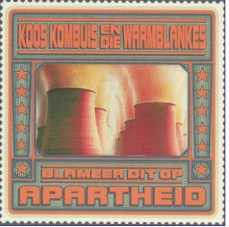Wrapped Around The Moon – Koos Kombuis
Koos Kombuis had a rough time in his early life, dealing with mental health problems, being committed to a psychiatric hospital by his parents and even undergoing shock therapy. That was before he became a Afrikaaner rebel, being one of the leading figures of the Voëlvry movement and in the process becoming a major Afrikaans music artist.
If ‘Wrapped Around The Moon’ were to be your first introduction to Koos, you would struggle to believe that he had such a difficult and restless past as the song is a relaxed and quite beautiful one. The song came from his ‘Equilibrium’ album which was released not too long after Koos became a father and is not the only track on the album that refers to fatherhood. However, this is a far better track than the rather cringeworthy ‘Luierlidjie’. It floats along gently on the gentle swells of guitars and muted accordion.
The lyrics are in English and appear to be directed at Koos’ father. In them he asks ‘Daddy can you hear this tune?’ and goes on to say that it is ‘the tune of the realm of forgiveness’. This suggests a coming to terms with his past, made easier through him becoming a father himself.
It is one of his more gentle songs and would fall into the same category as ‘Lisa Se Klavier’ although it is not as strong a track as ‘Lisa’, but it has a beauty to it, not only in the tune itself but also in the lyrics and their theme of forgiveness and parenthood.
Where to find it:
Equilibrium – Koos Kombuis, (2002), Rhythm Records, RR033
Video:









